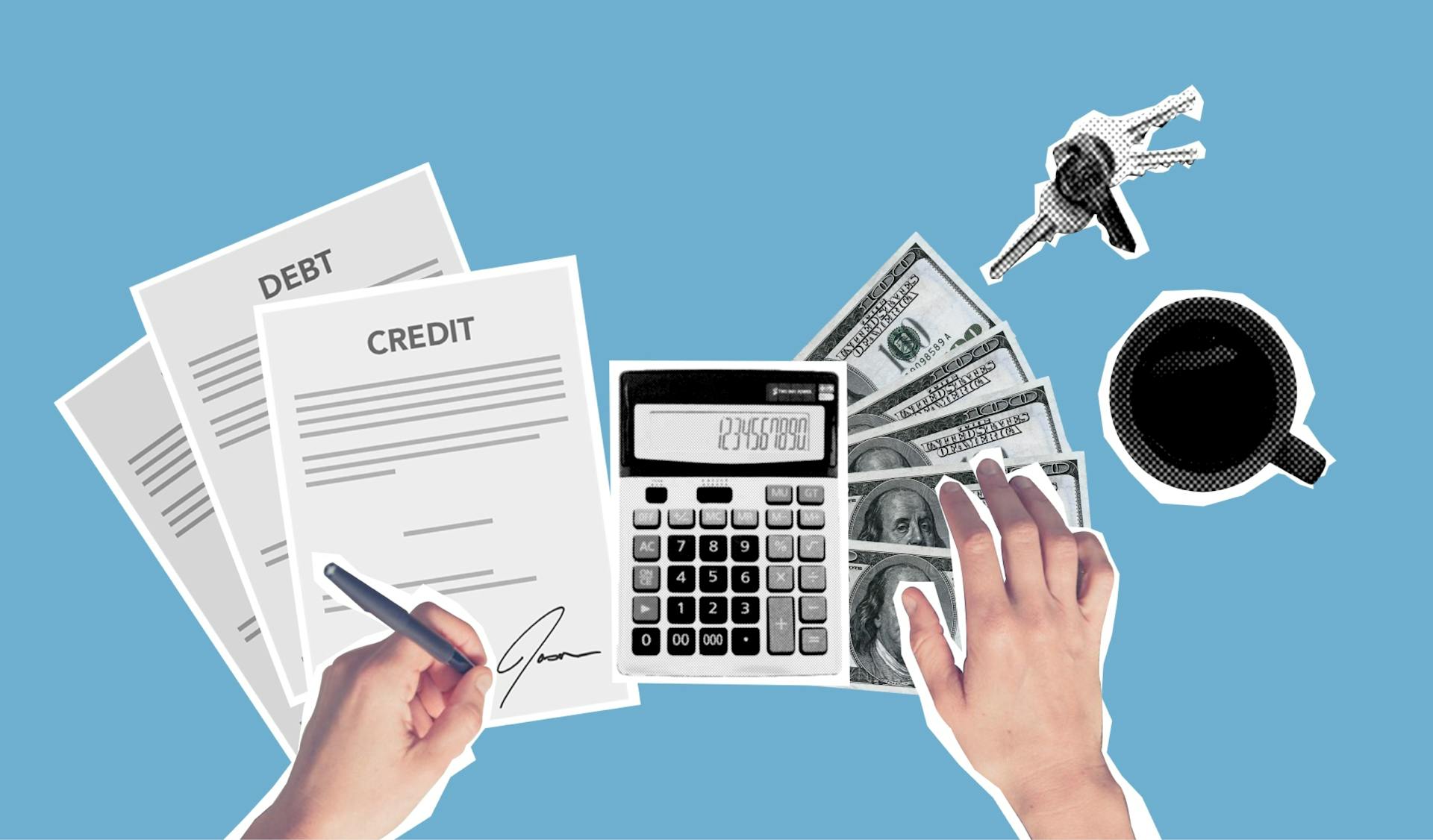
If you're a first-time homebuyer in Texas, you're likely to be overwhelmed by the numerous types of mortgage loans available. Fortunately, there's a loan type that's specifically designed for first-time homebuyers: the FHA loan. This loan requires a lower down payment, making it more accessible to those who might not have a lot of savings.
For those who want to put their savings to work, a 15-year mortgage loan is a great option. This loan type allows you to pay off your mortgage in just 15 years, saving you thousands of dollars in interest payments over the life of the loan.
A different take: First Time Homeowner Loan No down Payment
Types of Mortgage Loans
In Texas, you have several options when it comes to mortgage loans. A fixed-rate mortgage is a great choice for borrowers who prefer stable principal and interest payments on their mortgage.
Fixed-rate mortgages come in two common options: 15- and 30-year mortgages. They offer more stability and predictability, allowing you to better budget for housing costs. Your monthly principal and interest payments won't change because your interest rate won't change.
Recommended read: Balloon Loan Meaning
For borrowers who need short-term savings, an adjustable-rate mortgage (ARM) might be the way to go. The 5/1 ARM is a popular choice, offering lower rates for the first five years and then adjusting yearly until the loan is paid off.
If you're planning to stay in your home longer, a fixed-rate mortgage is likely your best bet. But if you're only staying for a short time, an ARM could save you money in the short term.
Here are some key differences between fixed-rate and adjustable-rate mortgages:
Conventional loans, also known as conforming loans, are another option for borrowers in Texas. They meet guidelines set by Fannie Mae and come in a variety of terms, from 10 to 30 years. To qualify, you'll need a credit score of 620 or higher, a stable income, and a maximum conforming loan amount of $726,200 for 2023 or $750,000 for 2024.
Expand your knowledge: Non Conforming Mortgage Loans
Conventional
Conventional loans are the most popular mortgage option, and for good reason. They offer a wide variety of lenders and flexible terms, making it easier to shop and compare rates.
To qualify for a conventional loan, you'll typically need a credit score of at least 620 and a debt-to-income ratio under 36%. You'll also need to provide in-depth income, employment, credit, asset, and debt documentation for approval.
One of the biggest perks of conventional loans is that you can get rid of private mortgage insurance (PMI) once you reach 20% equity in your home. However, you'll need to pay PMI if you put down less than 20%.
Conventional loans are available with down payments as low as 3%, and the 2024 limit for conventional conforming loans is $766,550 in most counties, and $1,149,825 in high-cost areas.
Here are some key requirements for conventional loans:
- Minimum credit score of 620
- Debt-to-income ratio under 36%
- Down payments can be as low as 3%
- Private mortgage insurance required for down payments under 20%
These loans are ideal for borrowers with a steady income and employment history, strong credit, and at least a 3% down payment.
Types of Mortgage Loans
There are several types of mortgage loans available, each with its own set of characteristics. An adjustable-rate mortgage (ARM) is a type of mortgage loan that has a variable interest rate, which can change based on market conditions.
ARMs typically begin with a lower introductory rate, but can adjust periodically, possibly raising your mortgage payment. This can be a good option for buyers who plan to move or refinance before the rate begins adjusting.
A 5/1 ARM is a popular option, with a fixed rate for the first five years and then adjusts annually for the remainder of the loan term. This type of ARM usually starts off with a mortgage rate that is lower than fixed-rate loans.
ARMs can be riskier, as the rate can increase significantly after the initial fixed period. However, they can also offer lower interest rates to start, which can help buyers stretch their budgets.
On the other hand, fixed-rate mortgages offer the financial comfort of a stable and predictable monthly payment. The 30-year fixed-rate mortgage is the most common fixed mortgage chosen, allowing for the lowest monthly payment spread out for the longest period of time.
Here are some key differences between ARM and fixed-rate mortgages:
It's essential to carefully consider which type of interest rate makes sense for your situation. If you're planning to stay in your home longer, a fixed-rate mortgage might be the better choice. However, if you're looking for a lower introductory rate and are prepared for the potential risks, an ARM could be a good option.
Shorter-Term
Shorter-term mortgages can be a great option for homeowners who want to build equity quickly and pay less total interest. These loans often come with lower interest rates.
Loans lasting 20, 15, or 10 years have higher monthly payments, because repayment happens on a faster schedule.
For example, a 20-year mortgage will allow you to pay off your home in half the time of a traditional 30-year mortgage. This can be a good option for homeowners who have a stable income and can afford the higher monthly payments.
Here are some key benefits of shorter-term mortgages:
- Allow buyers to build equity more quickly
- Pay less total interest
Jumbo
A jumbo mortgage is a type of conventional loan that exceeds the conforming loan limits set by the Federal Housing Financial Agency (FHA).
For a single-family loan in 2023, any loan above $726,200 in most parts of the country would be considered a jumbo loan.
Jumbo loans are typically used to buy luxury homes and allow borrowers to buy homes that are too expensive to be purchased by Fannie Mae or Freddie Mac.
You might like: Mortgage Loans for Mobile Homes on Land
They differ from high-balance conforming loans in that jumbo loans don’t conform to the guidelines put in place by Fannie Mae and Freddie Mac.
Jumbo loans require a large down payment, often as high as 20%, and have stricter credit score and down payment requirements than conforming loans.
To qualify for a jumbo loan, you may need to have a credit score of 680 to 700 and above.
Here are some key characteristics of jumbo loans:
- Allow for larger loan amounts, even if they exceed the limits for conforming loans
- Have stricter credit score and down payment requirements than conforming loans
- Require a large down payment
Jumbo loans can be used for a wide range of property types, including luxury homes, and interest rates are similar to conforming conventional loan rates.
However, they often require a larger down payment, especially if you want to use it for a second home or investment property.
Borrowers who need a mortgage that exceeds conforming loan limits may find jumbo loans to be a suitable option.
In recent years, jumbo mortgage rates haven’t been significantly higher or lower on average when compared with conforming conventional loans.
Curious to learn more? Check out: Investment Property Mortgage Rates vs Primary Residence
Refinancing and Home Equity
A refinance mortgage is a home loan that replaces your current mortgage with a new one, often to lower your payment or pay your loan off faster.
Homeowners can refinance to take cash-out for debt consolidation, home repairs, or renovations.
A second mortgage is a type of mortgage loan that allows you to borrow against the equity you’ve built in your home over time.
Home equity loans and HELOCs are types of second mortgages that use your home as collateral.
To refinance, homeowners typically have three main reasons: to get a lower interest rate, to pay their loan off faster, or to put extra money in the bank.
You can save on your monthly payment by refinancing to the lowest refinance rates available, or switch from a 30-year to a 15-year term to save thousands of dollars in interest.
A home equity loan is a lump-sum amount with a fixed interest rate, while a HELOC is a revolving credit line with a variable rate that works similarly to a credit card.
Both home equity loans and HELOCs can be used for any purpose, including debt consolidation or home improvement.
Here are some key characteristics of second mortgages:
- Allow borrowers to tap their home equity for any purpose
- Include lump-sum and credit line options
- Use a borrower’s home as collateral
Refinance
A refinance mortgage is a home loan that replaces your current mortgage with a new one, allowing homeowners to lower their payment, pay their loan off faster, or take cash-out for debt consolidation, home repairs, or renovations.
Homeowners can refinance for three main reasons, which include getting a lower interest rate, paying their loan off faster, or putting extra money in the bank.
You can save on your monthly payment by refinancing to the lowest refinance rates available if mortgage rates fall. This can add up over time and make a big difference in your budget.
Switching from a 30-year to a 15-year term can save you thousands of dollars in interest if you can afford the higher payment. This can be a great option for those who want to pay off their loan faster and save on interest.
With a cash-out refinance, you can convert home equity into cash and put the extra funds toward financial goals or home improvements. This can be a great way to get the money you need without taking on more debt.
Curious to learn more? Check out: Is Homeowners Insurance Required on All Mortgage Loans
Home Equity
Home Equity is a type of loan that lets you borrow against the value of your home. You can use it for anything, like paying off debt or fixing up your house.
A home equity loan is a lump sum amount with a fixed interest rate, while a HELOC is a revolving credit line with a variable rate. Think of it like a credit card, but secured by your home.
Both types of loans use your home as collateral, just like a first mortgage. This means if you can't pay them back, you risk losing your home.
You can use home equity loans or HELOCs for debt consolidation, home improvement, or anything else you need the money for.
Here are some key facts about home equity loans:
- Allow borrowers to tap their home equity for any purpose
- Include lump-sum and credit line options
- Use a borrower’s home as collateral, just like a first mortgage
Choosing a Lender and Loan
Conventional loans typically cost less than FHA loans but can be harder to get. You'll need to get your credit score up to 620 or higher to qualify for a conventional loan, and a credit score of 780 can get you the best interest rates possible.
To find the right lender and loan, consider the following options:
- Majority of loans
- FHA: Low down payment, available to those with lower credit scores
- VA: For veterans, servicemembers, or surviving spouses
- USDA: For low- to middle-income borrowers in rural areas
- State or Local Housing Agencies: Can be available to low- to middle-income borrowers, first-time homebuyers, or public service employees
- Special Purpose Credit Programs: Loans from private lenders or low- to middle- income borrowers generally in targeted communities
Shopping around can also help you find the best deal. A recent LendingTree study showed borrowers who shop multiple lenders can save thousands of dollars in interest charges over the life of their loans.
Finding Lenders
You can find mortgage lenders online or through referrals from friends, family, or your real estate agent.
To get the best rates, shop current mortgage rates with at least three different lenders.
Compare quotes from mortgage brokers, mortgage bankers, and your local bank to find the best deal.
Rates change daily, so gather quotes on the same day to ensure you're comparing apples to apples figures.
Get a mortgage rate lock once you find a home to secure your rate and keep track of the expiration date to avoid costly extension or relock fees.
You might enjoy: Best Place for Mortgage Loans
Choosing the Right
Conventional loans typically cost less than FHA loans but can be harder to get.
To qualify for a conventional loan, you'll need a credit score of 620 or higher, a debt-to-income ratio of 43% or less, and a steady employment history for the last two years.
A conventional loan requires a minimum down payment of 3%, but putting down 20% will help you avoid mortgage insurance.
Here's a quick rundown of the loan types:
The higher your credit score, the lower your interest rate will be, and the more you can borrow.
Understanding Loan Terms
A fixed-rate mortgage in Texas usually has a fixed interest rate that remains the same for the entire loan term.
The loan term can vary, but it's often 15 or 30 years. This affects how much you pay each month and the total interest paid over the life of the loan.
To give you a better idea, a 30-year mortgage in Texas can have a higher interest rate than a 15-year mortgage, but the monthly payments are lower.
Recommended read: What Is a 30 Year Fixed Mortgage
Term
The term of your loan is a crucial factor to consider when taking out a loan. It determines how long you have to repay the loan, which can range from 30 years to 15 years or other options.
Your monthly principal and interest payment will depend on the term of the loan. A longer loan term means smaller monthly payments, but you'll pay more interest over the life of the loan.
The interest rate and loan term work together to determine how much interest you pay over the life of the loan. For example, a longer loan term can result in more interest paid overall.
A loan term of 30 years will likely have a lower monthly payment compared to a 15-year loan. However, you'll pay more interest over the life of the loan with a 30-year term.
Here's a simple breakdown of how different loan terms can affect your payments:
Keep in mind that these are just examples, and your actual monthly payment will depend on your individual loan terms.
Check for Risks
When borrowing money, it's essential to check for risky features that could surprise you in the future.
A prepayment penalty is a fee charged if you pay off the loan early, which can add up quickly. This feature can be a huge surprise if you're planning to pay off the loan quickly.
Be cautious of balloon payments, which are large payments due at the end of the loan term, and negative amortization, which means the loan balance actually increases over time. These features can be a nightmare to deal with.
Interest-only loans are another type of loan that can be deceiving. You'll only pay the interest on the loan for a set period, but then you'll have to pay off the entire balance at once.
If you're considering a loan with any of these features, ask the loan officer why they're included and request a new Loan Estimate for a loan without them. This will give you a clear picture of the costs and risks involved.
Broaden your view: Title Loan Balloon Payments
Frequently Asked Questions
What is the most commonly used mortgage in Texas?
In Texas, conventional fixed-rate mortgages are the most commonly used type of home loan, offering a stable interest rate and predictable monthly payments. This popular choice provides a reliable foundation for homeownership.
What is an FHA loan in Texas?
In Texas, an FHA loan is a federally backed mortgage insured by the Federal Housing Administration, providing financial protection to lenders and borrowers alike. This type of loan offers favorable terms and lower down payment requirements, making it a popular choice for homebuyers in the Lone Star State.
Sources
- https://www.lendingtree.com/home/mortgage/
- https://www.consumerfinance.gov/owning-a-home/explore/understand-the-different-kinds-of-loans-available/
- https://texasmortgageconsultants.com/conventional-home-loan/
- https://www.lendingtree.com/home/mortgage/types-of-mortgage-loans/
- https://www.nerdwallet.com/article/mortgages/types-of-mortgage-loans
Featured Images: pexels.com


